Most types of photography can be easily defined by their subjects. A wedding photographer takes pictures of weddings. A portrait photographer poses someone and takes their picture. The nature photographer covers a wide area, but it is easy to categorize.
Street photography is difficult to define because it can encompass just about any subject.
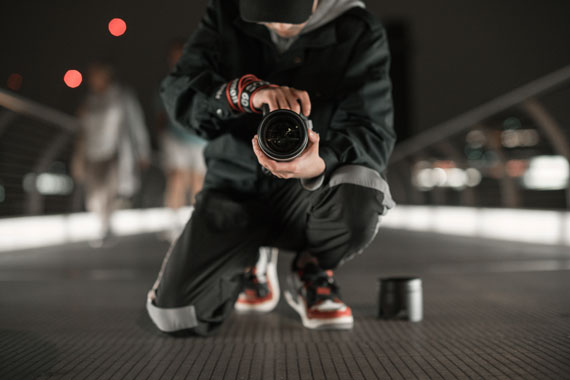
Photo captured by Yuan Zhe Ma
If I were to ask you to name a few famous street photographers, you might pick, Garry Winnograd, Henri Cartier-Bresson, or maybe Robert Frank. But if I asked you to define street photography – that would be more difficult. You might say that street photography is candid pictures of strangers on the street. That might be a good start, but it doesn’t really describe street photography.
To start with, street photography doesn’t need to be done on “the street.” And it doesn’t need to be pictures of strangers. In fact, it doesn’t even need to be pictures of people, though it usually is. Although there are common subjects for street photography, it is not so much about the subject as it is the style of the photograph. I can easily imagine an astronaut orbiting the earth, using a street photography style.
Just as any object or scene can be painted with in a cubist style, just about any subject can be photographed in street-photography style. I say almost any subject, because the one thing that all street photos have in common are human beings, or human artifacts: things that were made by human beings. So what are the characteristics of this style which can be separated from the subjects of the image.
The most common and famous property of street-photography is the idea of capturing “the decisive moment.” The most well-known street moment may be the blurred image of a man trying to jump a puddle at the railway station by Cartier-Bresson. A moment sooner and you have the guy standing, looking at the large puddle. A moment later, and the man has fallen into the puddle, or cleared it somehow. You don’t really know. But capturing the moment, even if it is important, isn’t everything.
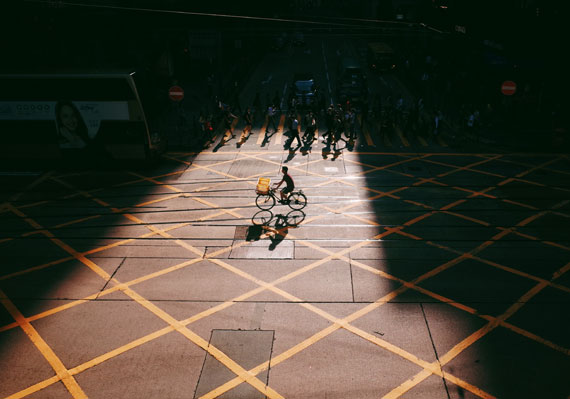
Photo captured by Kin Li; ISO 200, f/7.1, 1/200s.
Suppose that photograph were taken with a long modern lens, and the figure was frozen at 1/8000th of a second in mid-air, and the background and foreground were blurred because the depth-of-field with a long lens is very narrow. Well, it might look very much that moment when a pitcher releases the ball in an important game. The foreground and background are blurred. Even the closest part of the pitching mound is out of focus. Can that be considered a street shot.
No. Why not? It’s the decisive moment alright – but without context – it isn’t street photography.
Since we’re imagining shots, let’s imagine that you are sitting in the dugout with a normal or wide angle lens, and you hear footsteps on top of the dugout. You wonder what is going on, and at the same time you prepare your camera, and the pitcher is taking his wind up in the background, and just as he let’s go of the ball, a naked streaker jumps from the top of the dugout onto the field. And you have snapped just as the figure was in mid-air, and the ball was coming to the plate, and the pitcher was finishing his follow-through. That’s a street shot. No street. No buildings. But you have caught two moments, and pretty much everything is in focus, and you can look at the picture and just be amazed. The viewer is as surprised as you were – though you had some idea that something was about to happen.
It’s that sort of moment, or juxtaposition of ideas, that street photographers are fascinated by. If you had a lot of money, you could dream up this still shot, and rent out the stadium and the team, and recreate this shot exactly as described – but that would not be street photography. And so long as nobody told about how the shot was set up and planned, it would be considered a great street shot. If everyone found out that they were duped, it might still be considered a great photograph – but not a great street shot.
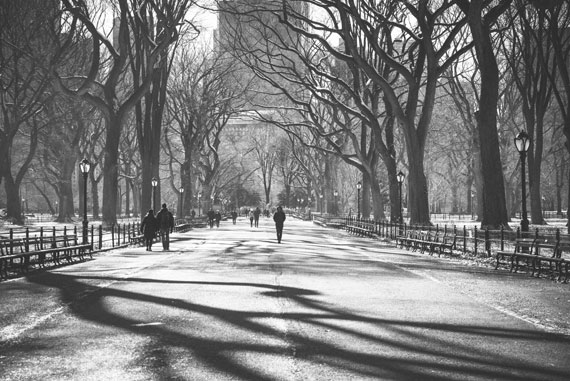
Photo captured by Maud Bocquillod; ISO 280, f/5.6, 1/500s.
The moment is not enough. To play by the rules, the shot really does need to be unplanned. It also needs to allow the eye to wander around and make it’s own conclusions about the meaning of the photograph. If street photography were a musical form – it might be jazz. It might be rock and roll. The style of music would have a measure of improvisation.
Street Photography is not the same as documentary photography
If you send our imaginary street photographer to photograph the President giving at a press conference, they return with pictures of the other photographers at the photo op. Journalistic images are a dime a dozen. Their style is about curiosity. They need find be surprised in order to press the shutter. And it’s not all based on juxtaposition, or the actual event. Maybe they find that three photographers look the same, and that’s enough to click the shutter, if they are arranged properly.
The street photographer is a perpetual tourist. They may never leave their own town, but as they walk around, they can see things that the rest of the world is oblivious to. So I say again – it isn’t the things they photograph nor is it always about the decisive moment.
I knew a street photographer who became fascinated by the different ways that people hailed a cab in New York. For two years, whenever he saw someone hail a cab, he tried to find a new angle, a new way of shooting this most ordinary of urban moments. One day, after years of keeping an eye out for people hailing cabs, he glimpsed, a young girl with crutches waiting to get into the cab. This might have been just another shot, but as he got closer to take the shot, he saw an old man with crutches was getting out of the cab. You look at the image, and think – what a stroke of luck to find this coincidence but he took years of maintaining this obsession to make something from the idea. And other times you just walk out of the house and are greeted with this sort of coincidental image.
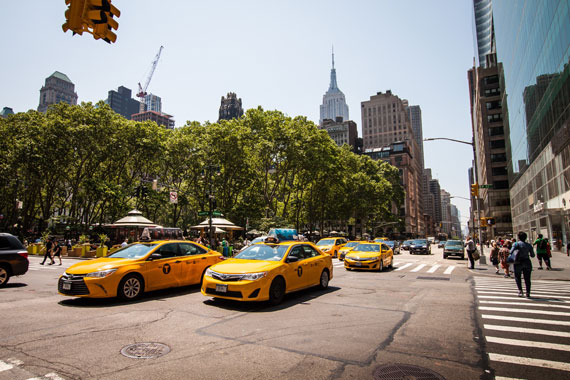
Photo captured by Michael Hutchinson; ISO 100, f/8.0, 1/200s.
Another common aspect of street photography that makes it different from other forms of photography, is that it is usually not sponsored. (In rare instances the photographer is given a grant to do this shooting, but as I say, this is rare). Just as nature photographers are haunted by their own desire to capture a mountain that is special or the mating habits of some bird species, the street photographer is driven to extract juxtapositions, or similarities, or unusual moments from the swirl of urban life.
The street photographer can best be identified not by what they shoot, but why they shoot. If their purpose is to make a discovery, to find a surprise, to give expression to their own curiosity about people and the things that people construct there is a good chance you’ve run into a street photographer. The best ones are like Zen hunters. I say Zen hunter, because you can’t force the unexpected. You can only be open to it.
You can’t force it, but you can put yourself in a place where there are enough people milling around to increase your odds. Looking for that moment is as useless as casting a fishing line and saying, “now I will catch a fish.” It doesn’t work that way.
The street photographer is the mirror image of the commercial photographer. The commercial photographer sets up the product to be photographed, arranges the lighting, controls as much of the image as he can, and takes the picture. The wedding photographer urges the various families to stand and smile at the camera. The idea of posing subjects is anathema for the street photographer.
The wedding photographer, or the commercial photographer are paid to produce a product. The street photographer is only paid afterwards, if at all.
The street photographer is often an unwanted guest. They need to develop Ninja-like techniques so that they remain unseen in the middle of a crowded street. They may even dress in camouflage. Rather than using a high-powered rifle to pick off wild beasts at a distance, the street photographer photograph strangers at close range. This can be scary for the beginner.
One photographer I knew would dress like a typical tourist in New York and bring a tourist map with him. He might stand near the Empire State building and gawk up at it, all the time taking pictures of the people around him. So here he is, a New York native for fifty years, play-acting the tourist so that he can blend in with the strangers around him.
I’m sure that many a street photographers dream of a cloak of invisibility.
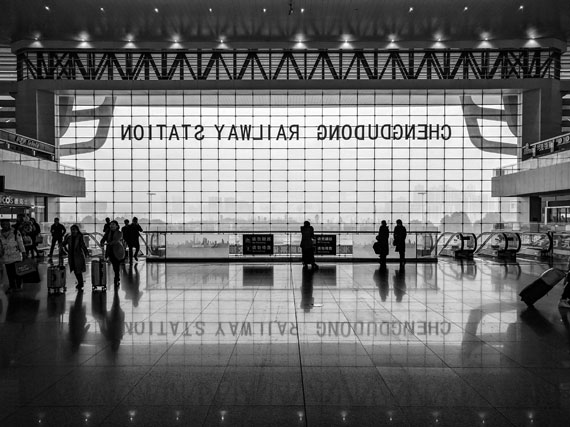
Photo captured by Jonas Lee
To conclude – there are the formal elements that can be used to define the street photograph: the mysterious decisive moment that is shown in context; the use of juxtaposed elements to form a new synthesis that is unusual, although the juxtaposed elements may be ordinary; the desire to let the scene play without disturbing it; and most of all, the desire to experience and communicate the surprise that the photographer feels in the frame which is pointed at the world of human beings and their creations.
As you can see, it would be much easier for me to talk about techniques that street photographers use to achieve their ends then it is to define the style, but hopefully this article is useful in explaining the how it can be recognized.
About the Author:
Dave Beckerman is a street photographer in New York. He has been working as a professional fine art photographer for the last 10 years. Before that, it was an avocation.
Like This Article?
Don't Miss The Next One!
Join over 100,000 photographers of all experience levels who receive our free photography tips and articles to stay current:





